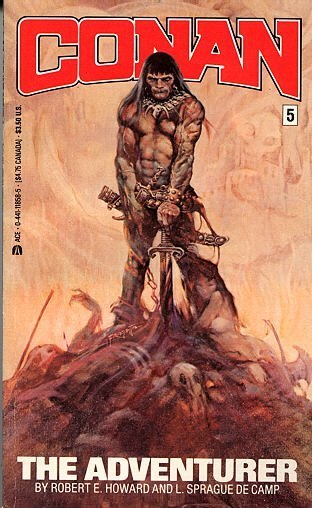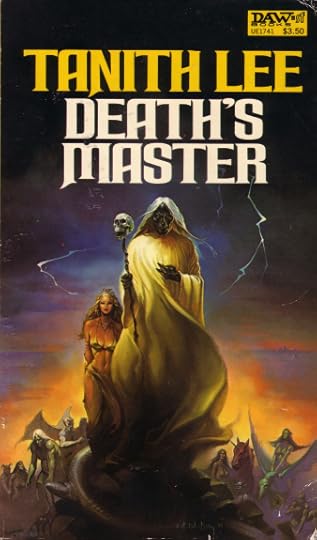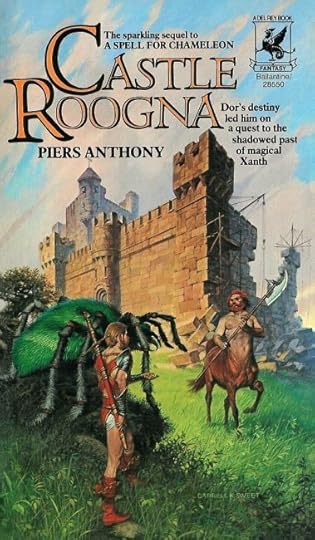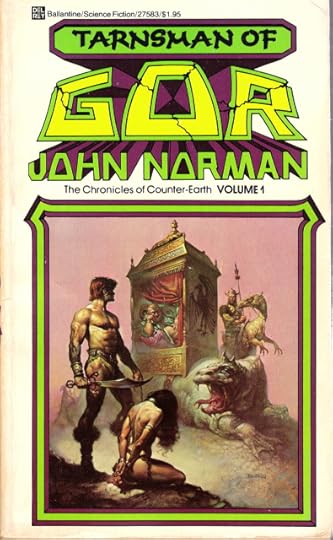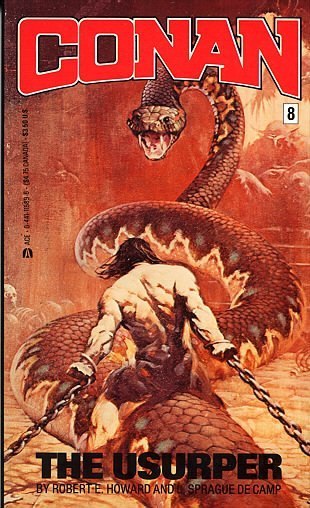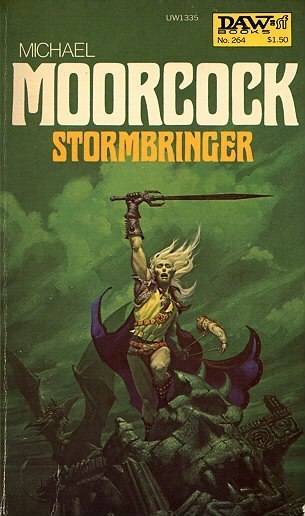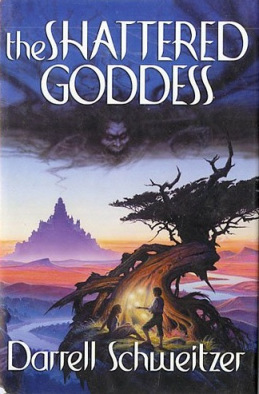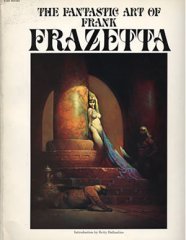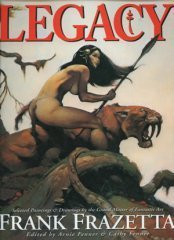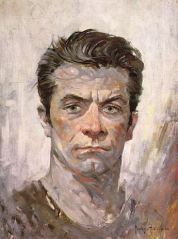John R. Fultz's Blog, page 65
March 9, 2013
What Makes a Fantasy Epic?

Art by Jim Steranko
“Dude, that was EPIC!”
It’s a term that people throw around a lot these days. “Epic.”
Epic Fantasy has even become its own genre, even though fans (and writers) often disagree just what constitutes an “epic fantasy.” Can sword-and-sorcery be epic? Can you write a horror epic? Has the term been overused so much that it has lost all meaning? To answer these questions we have to explore where the word “epic” came from, and how it has changed over the ages.
Scholars established centuries ago that an “epic” was a a long narrative poem which told the deeds of a legendary hero. Yet modern dictionaries have updated the term to include “any work of literature, film, etc., having heroic deeds for its subject matter or having other qualities associated with the epic.” So originally the word “epic” applied only to long poems about heroes. In ancient times these poems (i.e. songs) were performed by bards, skalds, and minstrels, usually accompanied by harp music. In fact the word actually comes from the Greek word “epos” which means speech, word, and song.
From this classic tradition come the epic poems of Homer, the Iliad and The Odyssey. The Iliad, or Song of Ilion, tells the story of the Trojan War, and it dates back to the 8th Century BC. The Odyssey, of course, follows the 10-year heroic journey of Odysseus as he attempt to return home after that war. Although attributed to Homer, both of these epics were part of a longstanding oral tradition that was later codified and set into writing by Homer. Similarly, an anonymous Anglo-Saxon poet set into words the legendary tale of the Norse hero Beowulf somewhere between the 8th and 11th Centuries.

Art by Enrich Torres
Ancient India gave birth to the Mahabharata and the Ramayana. The Mahabharata weighs in at 74,000 verses, making it one of the longest epic poems in the world, and probably the oldest. The epic of the hero-king Gilgamesh came out of Ancient Mesopotamia and is one of the earliest known works of literary fiction. Like other classical epics, the story of Gilgamesh was passed down orally for generations, yet it eventually wound up engraved onto twelve clay tablets in 7th Century Assyria.
What do all of these ancient epics have in common with today’s epic fantasies? The epic format has changed from poetry to prose, but the basic quality of the epic remains true: It is the chronicle of a hero (or heroes) who performs heroic deeds. Instead of really long poems, we have really long novels and multi-volume epics. The latter has become the standard of today’s fantasy publishing world.
In ancient times these stories were considered cultural truths, whereas today audiences know their epics are fiction. A willing suspension of disbelief is required to enjoy any work of fantasy, yet good fiction reveals many truths. As Stephen King put it: “Fiction is the truth inside the lie.”
So what are today’s great epics? And what separates them from traditional epics?

Art by Michael Whelan
Certainly Tolkien’s Lord of the Rings set the paradigm for the modern fantasy epic. How appropriate that a scholar who spent his life studying the great works of early literature brought the epic firmly into the modern age. Professor Tolkien was uniquely qualified to update the epic tale and make it palatable for 20th Century audiences. In LOTR we have an extended story of heroes performing heroic deeds. Yet Tolkien updated the concept by adding a strong sense of humanity to his heroes, along with a dash of English flavor.
Tolkien’s Hobbits are unlikely heroes—simple folk who would rather have good food and comfortable beds than perilous adventures. In Tolkien’s epic the Elves represent the ancient world—their legends reflect the qualities of Beowulf and Odysseus—the Elves of Middle-Earth are immortal warriors with a mystical understanding of the universe and often supernatural powers. In the early epics, the heroes weren’t “normal” humans—they were more like Tolkien’s Elves. Gilgamesh, Beowulf, and Achilles are larger-than-life bastards who slay monsters and survive a thousand deaths. Odysseus was such a bad-ass that not even the gods could destroy him. Ancient heroes stood far above humankind. The Greeks explained this with the idea that heroes like Hercules actually were half-divine, the offspring of lustful gods.
Tolkien’s genius is that he took the classic epic tale and gave it a deep core of humanity. The Hobbits are far more human than the imperishable Elves. Frodo, Sam, Bilbo, and the other Shire-born folk reflect flawed human qualities, but they also reflect the potential for nobility and heroism that lies inside us all. Tolkien’s actual humans are also flawed and so very human: Boromir’s heroism is tainted by his weakness, his lust for the power of the One Ring; Aragorn’s heroic status is something he fears to embrace, and LOTR is in large part the story of how he finally accepts his destiny as the hero-king of Gondor. It’s also worth noting that Tolkien gave us our very first epic heroine in the form of Eowyn, a shieldmaiden who rises up to slay the Lord of the Nazgul—something which no mortal man could ever do. In the ancient epics there were no female heroes; so when it comes to heroism Tolkien was mightily progressive in his thinking, and his story was much the richer for it.
 E.R. Eddison’s The Worm Ouroboros is an often-overlooked epic fantasy that is a pillar of the genre. It actually preceeds Tolkien’s achievements, since it was published in 1922. Yet its characters are not actually human—they are more akin to the indestructible epic heroes of old. Labelled as Demons, Witches, and Goblins, Eddison’s heroes are supernatural analogues of humanity fated to wage an unending cycle of war. Ouroboros may be the “missing link” between classic epic fantasy and modern epic fantasy.
E.R. Eddison’s The Worm Ouroboros is an often-overlooked epic fantasy that is a pillar of the genre. It actually preceeds Tolkien’s achievements, since it was published in 1922. Yet its characters are not actually human—they are more akin to the indestructible epic heroes of old. Labelled as Demons, Witches, and Goblins, Eddison’s heroes are supernatural analogues of humanity fated to wage an unending cycle of war. Ouroboros may be the “missing link” between classic epic fantasy and modern epic fantasy.
Eddison’s diction is intentionally dated, reminiscent of Shakespearean English, but his literary vision is stunning and fantastic. His tale of the warring kingdoms of Mercury, fought by superhuman warriors, does not attempt to explore the nobility and faults of human nature as Tolkien would do a decade or two later. Yet his heroes aren’t fighting for any noble cause above their own sense of glory and fame, which does separate them from the classic epic heroes.
Most 20th Century authors followed Tolkien’s example rather than Eddison’s, offering epic heroes with wholly human qualities. The modern epic does not vary in its essential concept of the hero’s journey. What has changed is the nature of the “hero” itself. This change actually began with Tolkien’s oh-so-human protagonists undertaking a classic epic adventure. The modern epic fantasy speaks to its readers on a fundamentally human level, telling stories of imperfect heroes. Unlike the ancient-world audiences who actually believed in Beowulf’s invulnerable will or the unmatched cleverness of Odysseus, we demand our fictional heroes to be as human as possible. Even when—especially when—they have tremendous powers.

Tyrion Lannister, a thoroughly modern epic hero
Modern epic heroes are usually flawed (like Tolkien’s were), and often they are anti-heroes. A hero can be many different things in today’s world, as long as he or she is human at the core. This human-ness is an essential quality, even when you have an inhuman hero. Again, we fall back upon Tolkien’s example of the Hobbits, who are incredibly human emotionally and spiritually, while actually a non-human race. A hero can be completely non-human on the surface, as long as he or she is human at the core. Modern readers must relate to these epic heroes on an emotional level, or they simply won’t care much about the epic itself.
In George R.R. Martin’s A Song of Ice & Fire the heroes are so real and vulnerable they can hardly be called “heroes” at all (in the classic sense). Martin’s protagonists are people caught in impossible situations, those who cling to their honor and personal convictions in the face of pain, suffering, and death. Ned Stark’s impeccable sense of honor led to his beheading in the first book of the series, and everyone of Martin’s characters walks in Ned’s immense shadow, for his sacrifice provided the ultimate example of heroism for this fictional world.
Martin’s work reminds us that what defines a hero is not just how he/she lives, but—even more important—how he/she dies. A world where anyone can die is a world where anyone can be a hero. Martin’s world is not the black-and-white of Good vs. Evil, but is comprised of continuous shades of grey. In this, it resembles our real world far more than most fantasy worlds. In Westeros and its surrounding realms, self-motivation usually trumps altruistic “good deeds.” Martin has taken what Tolkien started to the next level: Bringing the epic hero down to earth, smearing him in the mud and blood and filth of reality, and making his heroism all the more real by contrast.

Art by Michael Whelan
Moorcock’s Elric of Melnibone may have been the first anti-hero in the Epic Fantasy genre, born out of the tumultuous 1960s. Elric is an evil prince descended from a wicked race of conquering, torturing, demon-worshipping non-humans. Yet Elric is unique among his villainous people—he has a conscience. He knows he is evil, and it torments him. He often despises himself and falls into deep depression because of the horrible deeds he has committed. Yet he has a destiny: He is a tool forged of Chaos by the forces of Law because only a thing of Chaos can defeat Chaos. Elric is destined to bring about the apocalypse so a new world can be born out of the old one’s destruction. He is the hero as destroyer, though he often plays a more traditional hero role—sometimes as a mere side effect of his true purpose.
Elric is conflicted to the extreme, a living paradox, a complex creature on a journey that lasts six volumes (and more). In this respect he represents modern man himself—the confused, imperfect being fated to survive a violent world and make sense of a senseless universe. His story would never have played in the ancient world, when epic heroes were simple, straightforward, and single-minded. Although it may have made a nice Greek Tragedy if it was a whole lot shorter.
The concept of the humanized hero in Epic Fantasy continued across the 20th Century in the works of C.S. Lewis, Gene Wolfe, Tanith Lee, Stephen R. Donaldson, R. Scott Bakker, A. A. Attanasio, Steve Erikson, Terry Brooks, Stephen King, David Eddings, R.A. Salvatore, Tad Williams, and almost every other writer of the genre. The concept remains with us in the epics of the 21st Century as well. The more our modern heroes suffer, the more heroic they are to us.
The epics haven’t really changed, but the heroes have. They are now representations of ourselves.
So what makes a fantasy “epic”?
One: It is a story of heroes (even flawed heroes or anti-heroes) doing heroic deeds.
Two: The story is told in an extended form, whether it be a single thick volume or a series.
Beyond these two defining qualities, there is plenty of room for innovation, originality, and reinvention.
So who are YOUR favorite epic heroes?


March 4, 2013
Review Round-Up: PRINCES & KINGS
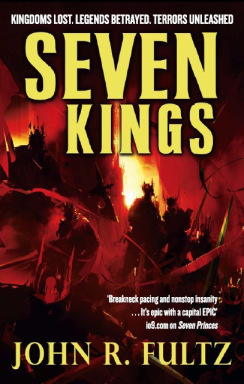 “[SEVEN KINGS] confirms Fultz as the master of fantasy characterization and plot.
“[SEVEN KINGS] confirms Fultz as the master of fantasy characterization and plot.
Epic fantasy on a grand scale.”
– BOOKS MONTHLY
———————————–
“Tarantino and Tolkien have a literary love child and his name is John R. Fultz. [Fultz] creates filmic mind-pictures with few words, contrasting scenes of beauty, devastation and spectacular battles. He can extract strong emotions with only a few words…”
–Ani Johnson, THE BOOKBAG
———————————–
“…when you add cracking characters to the wonderful sense of prose, the cracking descriptiveness of the world and of course the twisted nature of the plot, all round makes this a series that you’ll have a
hard time putting down.”
–FALCATA TIMES
———————————–
“Book two in Fultz’s imaginative visionary tale is the epitome of fantasy. His world-building is in a class by itself. His battle scenes explode with inconceivable actions, his imagery and descriptive narrative gives voice and life to his awe-inspiring characters and his heroes and nightmarish creatures give face to his epic tale.”
–RT BOOK REVIEWS
__________________________________________________________________________________________
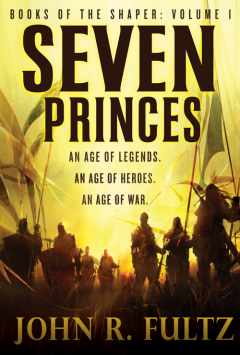 “Fultz’s debut novel is flawless …
“Fultz’s debut novel is flawless …
SEVEN PRINCES is as good as it gets.”
–Paul Goat Allen
——————————————————————-
“An unabashed, over-the-top fantasy epic…There’s a determined rejection of the epic fantasy ethos of deferred gratification. The whole book contains about 10 books’ worth of story ideas and plot twists, in under 500 pages…You sort of wish Frazetta was still alive, just so he could illustrate
some scenes from this book.”
–Charlie Jane Anders, io9
——————————————————————-
”A richly detailed background history filled with the legends of many cultures lends depth to a stand-out fantasy series from an author with an exceptional talent for characterization and world building.”
–The Library Journal
——————————————————————-
“When I was a kid, I read fantasy novels because the men were heroes, the villains were the most vile, despicable creatures possible, and the battles were epic. The stories were magical to my young mind, and I couldn’t wait to immerse myself in the realms of dragons and wizards each day after school. Thanks to John R. Fultz’s debut novel, SEVEN PRINCES, that magic is back in a big way.”
–James W. Powell
The Debut Review
——————————————————————-
”Here is a fantasy novel that manages to be as dark and gritty as an Abercrombie or Martin creation yet also sits comfortably within the realm of fairy tale, folklore, and myth, with its emotional verisimilitude never threatening to rob the series of magic or heroism, and its classic fantasy tropes never undermining its
emotional complexity and heft.”
–Robert William Berg
——————————————————————-
“This is fantasy of the Dunsany, Smith and Vance school, where breathless wonders spill off the page in spendthrift profusion. I can imagine a reader familiar only with the more prosaic, predictable and ‘realistic’ approaches to fantasy finding this novel to be the equivalent of a powerful dose of Black Lotus—dizzying,
spellbinding, maybe even hallucinatory.”
–John Hocking
——————————————————————-
“Here magic is the force than binds every single element and every single character. Without magic this book cannot exist. This is what draws you in, for in this world there are no limits, and, honestly, Fultz just runs with this amazing display of imagination in every single page.”
–Cristian Caroli
——————————————————————-
“SEVEN PRINCES
is bold, brash, and big. This is a novel written with bright strokes of character and setting, bursting with world-shaking adventure, intrigue, and conflict.
It reads big, and feels big, and it’s unrepentantly so.”
– Brian Murphy
blackgate.com
——————————————————————-
“John goes beyond the tropes and conventions of big fantasy; he makes them his own with original twists, and he always, always tells a human tale,
the story of characters that engage us.”
– Frederic S. Durbin
Author of DRAGONFLY and THE STAR SHARD
——————————————————————-
“… exciting and delightful … thoroughly entertaining …
characters you want to read more about…”
– MyShelf.com
March 2, 2013
My Top 10 FANTASY BOOK COVERS of All Time
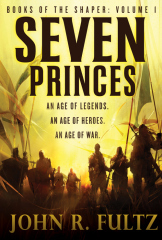 When it comes to the fantasy genre, covers are especially important. Perhaps even more important than other genres. Why? Because in fantasy literally ANYTHING is possible.
When it comes to the fantasy genre, covers are especially important. Perhaps even more important than other genres. Why? Because in fantasy literally ANYTHING is possible.
So the first function that a good covers serves is to let the reader know exactly WHAT KIND of story lies within. The second function of a good fantasy book cover is engage a SENSE OF WONDER in those who see it, which ideally gets them to actually pick up the book, take a look at it, and (if the Gods are with the author) actually BUY it.
A poorly designed or badly chosen cover can doom a book to years of sitting on the shelf. The old saying “You can’t judge a book by it’s cover” is actually true–however, people DO judge books by their covers. At least initially. Once you have read a book, THEN you know how good (or bad) it is, and the cover becomes far less important. But without that attractive, engaging cover, you might not have picked up the book in the first place!
Covers are even more important for writers who lack that ephemeral quality known as “fame”—famous writers’ books sell themselves despite the cover design. In order to get new readers to take a chance on your book, you need one thing above all else: A damn good cover.
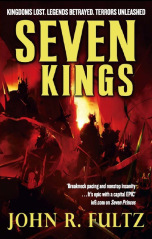 I’ve been reading fantasy fiction my entire life. Throughout those 43 years of joy, pain, and endless discovery, there have been books whose covers grab my attention, capture my imagination, and stay with me as if burned into the synapses of my brain.
I’ve been reading fantasy fiction my entire life. Throughout those 43 years of joy, pain, and endless discovery, there have been books whose covers grab my attention, capture my imagination, and stay with me as if burned into the synapses of my brain.
These are covers that have fascinated me for decades, and I know them so well they feel like parts of ME. That may sound strange, but writers are always a bit strange. These are covers that, to me, are perfect visions of the fantastic, distilled imagination manifested in color, line, and text.
A couple of clarifications first: 1) These are my favorite COVERS, not necessarily my favorite books—although I recommend all of them to discriminating fantasy fans. 2) I’m including only the covers of novels and anthologies here—no magazines or comics covers.
So, without further ado, here are my TOP 10 FANTASY BOOK COVERS of All Time…
10. CONAN THE ADVENTURER by Howard & De Camp – Art by Frank Frazetta
You can’t talk about great fantasy book covers without talking about Frank Frazetta. He was, simply put, the greatest fantasy artist of the 20th Century. He did so many great paintings and fired so many imaginations it’s nearly impossible to pick a favorite painting by him. His CONAN covers helped sell millions of copies in the 60s and 70s, bringing Robert E. Howard’s most famous creation back into mainstream popularity. If not for Frazetta’s amazing covers on these books, there would probably have never been any CONAN comics, or further editions of Howard’s work. The painting that adorns of the cover of CONAN THE ADVENTURER is one of the most iconic images of the Cimmerian ever painted. The battle is over and the barbarian conquerer stands atop a pile of defeated foes with the damsel he has rescued from the fray. Yet in the sky the images of doom and death hang above him like phantom premonitions of battles to come. Superb.
9. DEATH’S MASTER by Tanith Lee – Art by Ken Kelly
The second book of Tanith Lee’s TALES OF THE FLAT EARTH series just so happens to be one of my favorite fantasy novels. I first discovered the book in my early 20s when I picked it off the shelf of a used bookstore, knowing nothing about it. It was this gorgeous painting by Ken Kelly that made me reach for this book and take it home. From the moment I started reading, I was hooked, and I immediately sought out the entire Flat Earth series. Fortunately, all of these novels were collected into a couple of nice hardback editions—but none of the collected editions featured the amazing Kelly cover art that introduced me to the Flat Earth.
8. CASTLE ROOGNA by Piers Anthony – Art by Darrell K. Sweet
I must have been 9 or 10 years old when I picked up a copy of CASTLE ROOGNA at my local KMart store in Elizabethtown, Kentucky. The cover painting by the late, great Darrell K. Sweet grabbed my fancy—not only was there a barbarian hero with a two-handed sword on his back, but he was hanging out with a giant spider and talking to a centaur! Piers Anthony’s Xanth series (of which this was the third book) are perfect for young readers who crave lighthearted adventure and nonstop imagination. I ended up reading four or five Xanth books before I “outgrew” them, but this great cover still captivates me when I see it.
7. A PRINCESS OF MARS by Edgar Rice Burroughs – Art by Michael Whelan
Now that Frazetta has passed away, Michael Whelan has to be consider the new King of Fantasy Art. He has done so many amazing covers in the last three or four decades, I couldn’t begin to count them all. His style is lush and full of energy, and nowhere is this more evident than his spectacular cover to ERB’s first John Carter novel, A PRINCESS OF MARS. I fell in love with this book the first time I saw this cover, and I devoured the first four John Carter books as a youth. I love ALL of Whelan’s Martian Tales covers, but I picked this one because it conveys perfectly the spirit of the entire series: John Carter standing over a defeated Thark enemy holding the beautiful Dejah Thoris in his arms. Action, adventure, romance, aliens, sword-fighting, and even a radium pistol on his hip. What’s not to love? Also, this particular series of ERB books had an amazing logo treatment.
6. TARNSMAN OF GOR by John Norman – Art by Boris Vallejo
Much has been written about the sexism and sado-masochistic nature of John Norma’s GOR novels, but when I was a kid reading the first five books of the long-running series, I was oblivious to these adult themes. I read them for the heroic adventure, the exotic settings, and the swashbuckling action. Whether you love or hate Norman’s creation, there is no denying the amazing power of Boris Vallejo’s covers. My favorite is the first volume, TARNSMAN OF GOR, although Vallejo did many more for Norman’s series. This cover image has so much going for it—the exotic setting of the merchant in his lizard-borne palanquin, the spearman on his reptilian steed, the despairing slave girl in chains, and the warrior with his scimitar ready to defend her. Much like the ERB books, this series had a terrific logo treatment that made the art stand out and drew the eye like a magnet. Vallejo is a living icon of fantasy art, and this is one of his best covers.
5. CONAN THE USURPER by Howard & De Camp – Art by Frank Frazetta
You didn’t think I could do this list with only a single Frazetta cover did you? Impossible! This cover hit me like a sledgehammer as an 10-year-old fantasy reader—and the stories inside hit me even harder. Inside this volume I found some of Howard’s best original tales of Conan the Cimmerian: “The Scarlet Citadel” and “Phoenix on the Sword.” (The cover painting is based on the former.) This was about the time I started realizing that the Conan stories written by Robert E. Howard alone were far superior to the “pastiches” written by De Camp and Carter. Yet without the efforts of those two fine gentlemen (and the Frazetta covers), I might never have discovered the classic Howard tales.
4. THE YEAR’S BEST FANTASY STORIES Vol. 6 – Edited by Lin Carter – Art by Josh Kirby
The late Lin Carter is one of those polarizing figures in the world of fantasy. He is widely praised as an editor who brought classic fantasy to new heights of popularity in the 60s and 70s—practically resurrecting the Sword and Sorcery genre singlehandedly with his Ballantine Adult Fantasy series and CONAN collections. Yet his own fiction is often denegrated and dismissed by “purists” and fans who consider him a less-than-worthy writer. Whatever you think of his colorful, pulp-influenced writing, there is no doubt that Carter knew how to pick a terrific cover for his books. This cover from 1980s THE YEAR’S BEST FANTASY: 6 is one I never tire of looking at. I was in middle school when this book called to me from across a convenience store, and it’s still one of my favorite fantasy images. The stark white background makes Josh Kirby’s painting really “pop” right off the cover, the text font is perfect for fantasy, and this cover defied expectations of the time. Instead of a brawny warrior defending a “damsel in distress” here was a kickass babe who was a Giant-Slayer in her own right. And she looks damn good doing it, too.
3. BARBARIAN OF WORLD’S END by Lin Carter – Art by John Bierley
Another splendid pulp-inspired cover from Lin Carter, this one for the fourth novel in his Gondwane series (1977). Here we see the Herculean hero of World’s End, Ganelon Silvermane, captured and chained by a horde of red-eyed Ximchak barbarians. This is one of those covers that imprinted itself on my adolescent brain like a tatoo on a biker’s arm. I love the red text on the yellow background, I love the crude beauty of the image, and I never get tired of staring at this cover. I have never encountered another cover or painting by Bierley, so that makes this one even more special.
It’s just COOL!
2. LOST WORLDS by Lin Carter – Art by Enrich Torres
This is the third Lin Carter book on the list, and it only goes to show that the man had great taste in artists, as well as writers. This particular book is my favorite of all Lin’s fiction, as it includes my favorite Carter short story “The Twelve Wizards of Ong,” as well as a couple of stories he finished based on outlines from Clark Ashton Smith, who is one of my favorite writers. There are some other great stories in this slim volume, including a tale or two of Carter’s Thongor of Valkarth. The cover by Enrich Torres fires my imagination like few other images: Again we have the warrior-woman—this time she’s carrying the severed head of a brutish foe, and she’s riding on the back of a majestic centaur. They stand at the edge of a shadowy abyss, and the mind reels at imagining the horrors that lay in the darkness far below. Something tells me she’s about to toss that head into the chasm…but we’ll never know unless someone writes a story based on this incredible painting.
Okay, you talked me into it.
1. STORMBRINGER by Michael Moorcock – Art by Michael Whelan
Whelen did tons of magnificent covers, but the one that stands out the most for me is STORMBRINGER. Moorcock’s most legendary creation is Elric of Melnibone, the White Wolf, the Prince of Ruins, the original Kinslayer. Nowhere is there a more iconic and enduring image than this cover: Standing atop a ruined tower, Elric hoists the black blade and the tempest rises about him. The novel gets its name from the soul-drinking blade that is far more than it seems. The story here is apocalyptic, and the cover conveys all the grandeur, beauty, and wonder of the epic adventure inside. This is my favorite of Whelan’s many masterpieces, and it could serve as a representation of everything that’s cool about heroic fantasy.


February 23, 2013
GAME OF THRONES Season 3 Trailer
It may be spring, but Winter Is Coming once again…HBO’s GAME OF THRONES is back on March 31.
Here’s the first trailer, which features a lot of nice glimpses into what’s in store. Even if you’ve read all these books, as I have, it’s still a thrill and a treat to see George R.R. Martin’s creation brought to life so skillfully and faithfully on the screen.
One of my favorite things about this trailer is seeing the addition of the great Ciaran Hinds to the cast in the role of barbarian lord Mance Rayder. He was great as Julius Caesar on ROME, he was great as Tardos Mors in JOHN CARTER, and he’s great in pretty much everything he does. So he is a welcome addition to this stunning cast.
Also, our first glimpse of a dragon in flight…


February 19, 2013
ECHOES OF THE GODDESS: Terror & Wonder
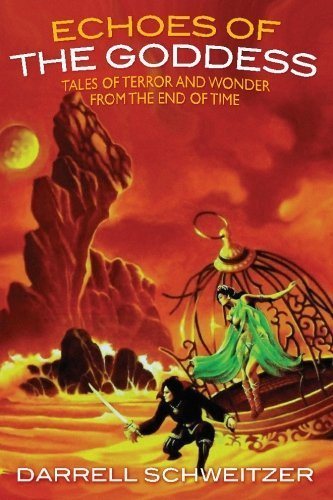 Imagine a golden treasure chest filled to overflowing with rare and sparkling jewels. Now imagine the literary equivalent of that bounty: The jewels are visions of a fantastic world filled with dark magic, dead gods, and exotic cultures.
Imagine a golden treasure chest filled to overflowing with rare and sparkling jewels. Now imagine the literary equivalent of that bounty: The jewels are visions of a fantastic world filled with dark magic, dead gods, and exotic cultures.
The latest book from Darrell Schweitzer is a treasury of obscure tales woven into a single, epic tapestry of high fantasy. ECHOES OF THE GODDESS collects eleven stories set in the same weird world as Schweitzer’s second novel THE SHATTERED GODDESS (1982). However, ECHOES is not a sequel to SHATTERED. Instead it serves as a prequel, and a fine introduction to both the world of GODDESS and the superb fantasies of Darrell Schweitzer.
ECHOES OF THE GODDESS: TALES OF TERROR AND WONDER FROM THE END OF TIME was released by Wildside Press in February 2013, but it was literally decades in the making. All of these stories were written between the years 1979 and 1985.
Wildside describes the book: “This is an Earth of the far future, when the planet has declined into chaos, and darkness looms at the end of human history. Here you’ll meet…a wizard’s shadow attempting to become a man; two sorcerers grotesquely transformed by their fratricidal hatred; a musician who becomes the lord of death; a boy-priest consumed by divine visions; and a witch who loves a god, and many others. Here’s strangeness, wonder, and terror in the tradition of Clark Ashton Smith’s ZOTHIQUE or Jack Vance’s THE DYING EARTH.”
Nobody works in the “story cycle” tradition quite as well as Schweitzer does. While most of today’s writers focus on cranking out novels, he prefers the short story form and is one of the widely acknowledged masters of the form. Some of his previous story cycles have been collected as the books WE ARE ALL LEGENDS and THE BOOK OF SEKENRE. Yet the stories in ECHOES OF THE GODDESS represent the author in the formative stages of his career, when his imagination was raw and unbounded. This was years before he would go on to win a World Fantasy Award for co-editing WEIRD TALES with the late George Scithers, and well in advance of his “To Become a Sorcerer” novella being nominated for that same prestigious award.
 The stories in ECHOES OF THE GODDESS include:
The stories in ECHOES OF THE GODDESS include:
The Stones Would Weep
The Story of a Dadar
The Diminishing Man
A Lantern Maker of Ai Hanlo
Holy Fire
The Stolen Heart
Immortal Bells
Between Night and Morning
The Shaper of Animals
Three Brothers
Coming of Age in the City of the Goddess
Most of these tales originally ran in small-press or indie publications, and they’ve never been collected into a single volume until now. There are three from AMAZING, one from FANTASY TALES, two from FANTASY BOOK, and five from the late, great WEIRDBOOK.
The artwork of Stephen Fabian has always been a perfect fit for Schweitzer’s lyrical, often phantasmagorical, storytelling. The gorgeous wrap-around cover of ECHOES is an updated version of Fabian’s cover for a special edition of Jack Vance’s THE EYES OF THE OVERWORLD. A perfect fit both visually and thematically.
“All of these stories take place before the events of THE SHATTERED GODDESS,” Schweitzer says, “but only the first of them ['The Stones Would Weep'] was actually written first. I am now 60. We are talking about stories I wrote mostly in my late 20s. I think that might well be why they are…surprisingly romantic for me. ‘A Lantern Maker of Ai Hanlo’ [completed in March '82] was the first substantial story that George Scithers ever bought from me (for AMAZING). Then he put it on the cover. He got me an interior illustration by Tim Kirk because I asked for one, and it was obviously a good idea.”
What sets a “story cycle” above a collection of unrelated tales is a sense of cohesion, continuity, and a resulting synergy. The whole of the reading experience becomes greater than the sum of its parts. “When you read these stories in the book rather than separately…there is an overall narrative structure that runs from ‘The Story of a Dadar’ through ‘The Stolen Heart.’”
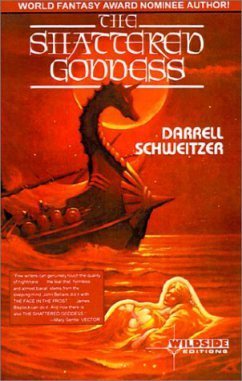 Schweitzer noted that “The Stolen Heart” has been substantially rewritten for this volume. “The revisions were mostly for style. I think the problem was that at the time I had paid so much attention wrestling with the abstruse concepts and labyrinthine plot [of this story] that I was rather careless about how things were phrased. It needed another draft. So, in 2012, I gave it one. This story required far more licking into shape than any of the others. And it did not occur to me that Black Veiada, the witch, was the same witch who initiates events in THE SHATTERED GODDESS. Someone suggested that to me in a writing workshop. It fits. I suppose she is, though I did not think of that consciously.”
Schweitzer noted that “The Stolen Heart” has been substantially rewritten for this volume. “The revisions were mostly for style. I think the problem was that at the time I had paid so much attention wrestling with the abstruse concepts and labyrinthine plot [of this story] that I was rather careless about how things were phrased. It needed another draft. So, in 2012, I gave it one. This story required far more licking into shape than any of the others. And it did not occur to me that Black Veiada, the witch, was the same witch who initiates events in THE SHATTERED GODDESS. Someone suggested that to me in a writing workshop. It fits. I suppose she is, though I did not think of that consciously.”
There are also minor changes in “The Stones Would Weep,” specifically a toning down of the language a bit to make it less sentimental, and also replacing a shepard boy’s highly implausible lute (which would be wrecked the first time he got rained on) and with the more traditional lyre.
Now that readers have the opportunity to read ECHOES OF THE GODDESS and follow it up with THE SHATTERED GODDESS, Schweitzer says he could return to this fictional world again if the inspiration strikes. “I am left wondering if I could write another one of these [tales]. There are things which are unexplored yet. How did any of these characters (assuming they lived at the right time) fare during the apocalyptic events of THE SHATTERED GODDESS? There has been really very little interaction with the lost, ancient technology of the Dead Places, beyond a couple scenes in which ancient cities appear as mirages and [flashbacks] of airships in ‘The Stolen Heart.’ And of course I have written nothing about the post-human world after the events in the novel. I would not rule any of this out, although if you consider that I was a little short of 33 when the last of these stories was written, I would expect that any future attempts would read a little differently.”
ECHOES OF THE GODDESS is available now at Amazon.com as a 274-page trade paperback.
THE SHATTERED GODDESS is available in both soft- and hardcover versions.


February 14, 2013
Seven Songs for SEVEN KINGS
A while back I posted a playlist for SEVEN PRINCES.
It only makes sense that I post a new one for SEVEN KINGS, now that it’s out.
So here they are: Seven Songs for SEVEN KINGS…
(WARNING: These tunes are best played at top volume, either on headphones
or in a place where you can really jam out loud.)
“Hawks and Serpents” – THE SWORD
“Odyssey” – KYUSS
“Spill the Blood” – SLAYER
“Dead Roots Stirring” – ELDER
“Belly of the Beast” – DANZIG
“There Is Nothing” – BLACK SLEEP OF KALI
“The Wizard” – Uriah Heep
(Special thanks to Nathan Long for the idea.)


February 3, 2013
Site Redesign
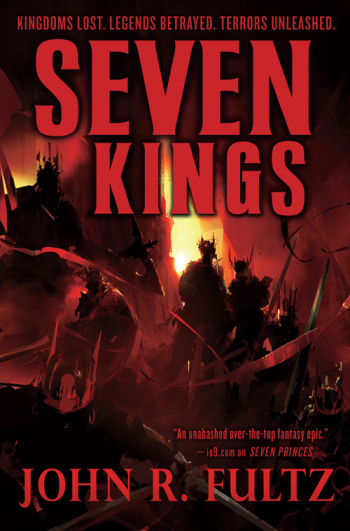 You may have noticed this site looks a bit different these days. Now that it’s officially http://www.JohnRFultz.com I thought I’d jazz up the appearance and features a bit.
You may have noticed this site looks a bit different these days. Now that it’s officially http://www.JohnRFultz.com I thought I’d jazz up the appearance and features a bit.
The best thing about it is the list of monthly ARCHIVES you’ll see in the lower right-hand column. I’ve got close to three years of articles, essays, reviews, comments, and blog reports there, and now you can check them all out month-by-month. Heck, I may start going through there and re-running some of my favorites.
I’ve also got links to Amazon so visitors can buy SEVEN PRINCES and SEVEN KINGS with a few quick clicks.
LATEST NEWS:
Orbit has moved the release date of SEVEN SORCERERS up to December 2013 (instead of Jan ’14). So the trilogy will be complete by the end of the year.


January 29, 2013
A “Lost” Frazetta Treasure
 One of the biggest influences in my life—especially when it comes to my imagination and my writing—is the great Frank Frazetta. Widely considered as the greatest fantasy artist of the 20th Century, his paintings for books and magazines in the 60s and 70s sold millions of copies and inspired generations of artists who came after him. To my mind, he is the single greatest painter of the 20th Century, and his work is pure distilled imagination given physical substance.
One of the biggest influences in my life—especially when it comes to my imagination and my writing—is the great Frank Frazetta. Widely considered as the greatest fantasy artist of the 20th Century, his paintings for books and magazines in the 60s and 70s sold millions of copies and inspired generations of artists who came after him. To my mind, he is the single greatest painter of the 20th Century, and his work is pure distilled imagination given physical substance.
Around 1979, when I was about 10 years old, my grandmother bought me a copy of THE FANTASTIC ART OF FRANK FRAZETTA Book 1, the first of a 3-book series collecting the best of Frank’s paintings from the previous two or three decades. I remember staring at each of these paintings for what seemed like hours—going back to the book again and again. Later in life I acquired massive hardcover Frazetta artbooks, containing even more of his amazing paintings and lush pen/ink drawings.

(Click to see super-large image)
As a lifelong Frazetta fan, I thought I had seen ALL of Frank’s published paintings. Yet while surfing the web the other day I happened upon a bonafide Frazetta image that I had never seen before. It was like finding a precious diamond lying on my doorstep.
The 1964 science-fantasy novel WARRIOR OF LLARN by Gardner F. Fox featured a Frazetta painting on its first edition cover—yet for some reason this painting was never reproduced in any of Frank’s art books or tribute volumes (at least as far as I know). Thankfully someone scanned a large version of this antique book’s gorgeous cover and posted it online.
Discovering a “lost” Frazetta painting was the thrill of my weekend, so I wanted to share it here. Instead of analyzing Frank’s inventive work on this little-known image, or talking about his stunning use of color, his dynamic sense of frozen movement, I will instead let the painting speak for itself.
I haven’t read the novel, and I’m more familiar with Fox’s legendary comic book writing than with his prose, but this image that Frank dreamed up for the cover inspires me nevertheless. Like most of Frank’s paintings, there are a hundred different stories that could be told based on this one image.
Frank Frazetta passed away in 2010 but his legend and his legacy reamain to thrill and inspire new generations. Like all truly great art, it is timeless, ageless, and speaks directly to the soul. This “lost” cover painting is a great example of these transcendent qualities.


January 27, 2013
THE REWARD – A Must-See Short Fantasy Film
Thanks to i09 for this glorious 9-minute animated fantasy adventure called THE REWARD.
A product of Denmark’s The Animation Workshop, it has to be seen to believed. An amazing and wordless journey that carries a timeless message, it manages to be thrilling, wondrous, and original, while dealing with some of the most classic fantasy tropes. It’s just brilliant, so I had to share it.
As i09 recommends: “Drop everything you’re doing and hit play…”
January 23, 2013
EARLY SK REVIEWS: Tolkien Meets Tarantino
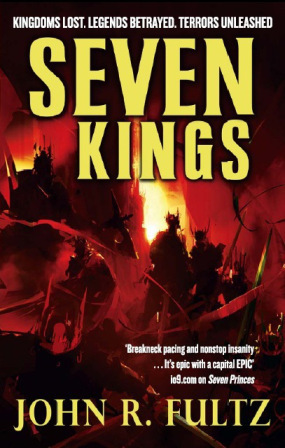 Early reviews of SEVEN KINGS are starting to come in. Here’s a quote from one of them that had me grinning from ear to ear:
Early reviews of SEVEN KINGS are starting to come in. Here’s a quote from one of them that had me grinning from ear to ear:
“Tarantino and Tolkien have a literary
love child and his name is John R. Fultz.”
–Ani Johnson, THE BOOKBAG
As a huge fan of both J.R.R. Tolkien and Quentin Tarantino, I am humbled and tickled by this statement. Ani goes on to write:
“Fultz creates filmic mind-pictures with few words, contrasting scenes of beauty, devastation and spectacular battles. He can extract strong emotions with only a few words…”
Click here for the complete review.
———————————–
FALCATA TIMES says of the book:
“…when you add cracking characters to the wonderful sense of prose, the cracking descriptiveness of the world and of course the twisted nature of the plot, all round makes this a series that you’ll have a
hard time putting down.”
Click here for the complete review.
———————————–
RT BOOK REVIEWS says:
“Book two in Fultz’s imaginative visionary tale is the epitome of fantasy. His worldbuilding is in a class by itself. His battle scenes explode with inconceivable actions, his imagery and descriptive narrative gives voice and life to his awe-inspiring characters and his heroes and nightmarish creatures give face to his epic tale.”
(Order SEVEN KINGS right here.)





